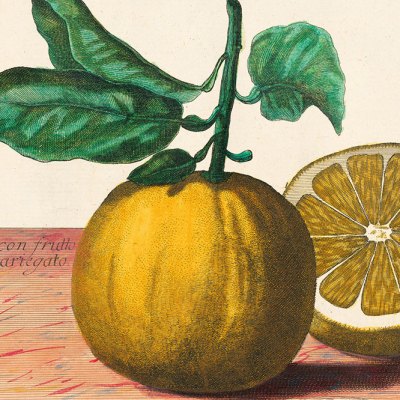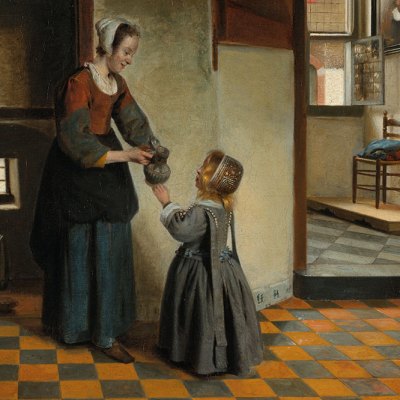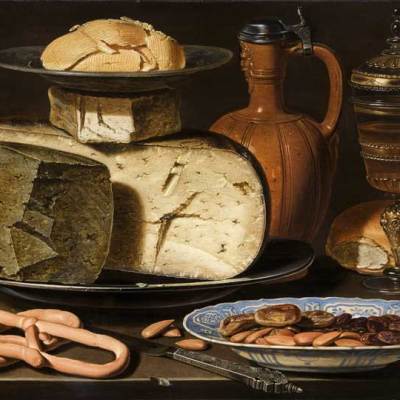From the March 2023 issue of Apollo. Preview and subscribe here.
The 17th century was long on lemons. That, at least, is the impression handed down by its art. A pudgy Spanish variety is a staple of bodegón still lifes, those hushed pantry paintings that emulated the example set by Juan Sánchez Cotán in Toledo at the turn of the century. In Rome, the patron and polymath Cassiano dal Pozzo commissioned scores of drawings of lemons and citrons, some with strikingly digitated forms, as he supervised the botanist Giovanni Battista Ferrari in compiling Hesperides (1646), a grand taxonomical project to fathom the mysteries of citrus fruit.
The most emphatic depictions of lemons, however, appeared not in southern Europe, where the citrus trees thrive, but in the altogether drabber climate of the north. The lemon lodged itself in Dutch still-life painting in the 1620s and for decades thereafter refused to budge. Its presence persisted as new modes of tabletop still life emerged, from the monochrome banketjes (banquet pieces) of Pieter Claesz and Willem Heda to more ostentatious arrangements made popular by Jan Davidsz. de Heem and Willem Kalf. The Dutch artists’ signature was to depict the fruit sliced open and half-peeled, its rind dangling from a plate or table-edge so that it curled into a little helter-skelter.
Citrus fruit had been imported in abundance to the Low Countries in the previous century, with small trees carried by ship to Antwerp from the Mediterranean (zuid-vruchten, the fruit of the south, had never fared well crossing the Alps). That they might beguile northern painters was already apparent: in the Ghent Altarpiece, Eve toys not with an apple but with a knobbly-skinned citron. But as the Dutch Republic began to flourish, with Amsterdam asserting its primacy as a trading centre, the citrus trade shifted north from Flanders. Dutch painters readily fell for its temptations.

It was Claesz, most likely, who established the pre-eminence of the half-peeled lemon. Other artists active in Haarlem had depicted peeled or bisected fruit in paintings that represent laid tables and interrupted meals – but the peel ribbon that appears in works by Floris van Dyck or Nicolaes Gillis has been stripped not from a lemon but an apple (a pomme écorchée, perhaps?). Working in a similar manner, in paintings such as Still Life with Peacock Pie (1627), Claesz was among the first to bring a sharp knife and a paintbrush to bear on lemons. As he honed his style, decluttering the objects and muting his palette, he thrust the lemon centre-stage as a protagonist.
Perhaps it was no more than the quality of Claesz’s example, his skill in conjuring the lemon’s alluring tones and textures, that encouraged other artists to follow suit. Either way, for paintings that mapped the prosperity and reach of the Dutch Republic on to the landscape of a tabletop, the brilliant yellow of lemon peel made for a conspicuous affirmation of a golden age. In the shadowy settings favoured by Willem Kalf, the twisting peel gleams like a flare squirrelling its way through the darkness.
Art historians have occasionally sought to hitch the lemons in such paintings to other items that attend them: the roemer filled with sweet white wine that might be tempered with a sliver of peel; the fish or oysters to be seasoned with lemon juice. These are tidy suggestions, certainly, but they perhaps curtail the playfulness with which artists positioned and portrayed the lemons in paint. Indeed, if anything, these fruit are not so much locked in their place as looking to escape from it: transformed into table decorations and with peel trailing from the tabletop towards the picture plane, as though trying to abscond into the world beyond the painting.
‘We have never seen a lemon in this way before,’ writes the art historian Svetlana Alpers, remarking on Dutch artists’ manner of subjecting, both at once, the exterior and interior surfaces of objects to close scrutiny in such paintings. But perhaps we have never seen a lemon in this way before because, for all the ostensible fidelity of its depiction by Claesz, Kalf or others, the artists often embellished the fruit in representing it.
Take a kitchen knife to some lemons and try for yourself to replicate the broad peel tendrils of Claesz or the festoons of De Heem. There is simply not enough rind to prevail, and certainly not if you reserve, as many of these paintings do, more than half of the fruit intact. Dutch still-life painting does not show lemons as they are but protracts their peel and pleasure – like a magician drawing silks from his sleeve.
From the March 2023 issue of Apollo. Preview and subscribe here.


